More than 30 million Americans could face a drinking water crisis if officials discover major flaws in America’s dam system
More than 30 million Americans could be affected by water shortages after sewage problems were discovered at a major U.S. dam on the Colorado River, officials warn.
U.S. Bureau of Reclamation inspectors found severe pipe damage at Glen Canyon Dam, meaning no spring water is being released, endangering water supplies downstream.
The pipes in question are called the “river drainage works” and are used to move water down the Colorado River to Lake Mead from the confined Lake Powell.
A fall release has not yet been scheduled or canceled, leaving residents of California, Nevada and Utah who rely on water from Lake Mead without an answer for now.
The pipes in question are called the “river drainage works” and are used to move water down the Colorado River to Lake Mead from the confined Lake Powell.
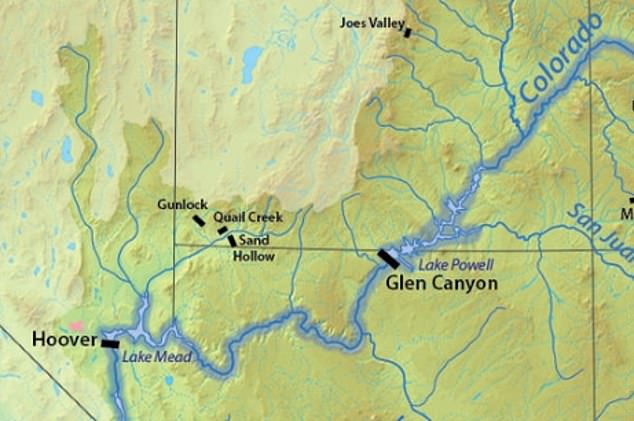
The Glen Canyon Dam holds back the waters of the Colorado River and forms Lake Powell. Water released from Glen Canyon Dam makes its way into Lake Mead, but if this spring water is not released, water levels could drop.
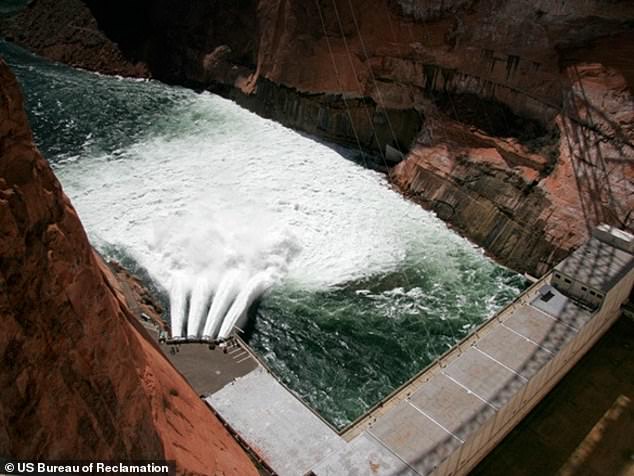
These four 8-foot pipes are the ‘river outlets’, which periodically release water downstream to help replenish the beaches with sediment.
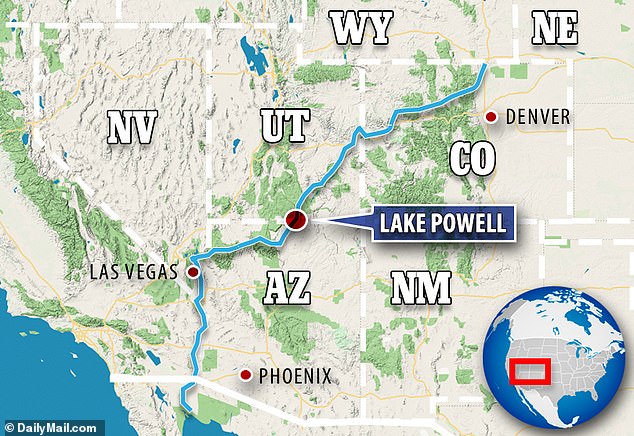
A fall release has not yet been scheduled or canceled, leaving residents of California, Nevada and Utah who rely on water from Lake Mead without answers for now
There are four 8-foot-wide pipes running from the dam that carry water downstream, where it flows some 200 miles into Lake Mead. Lake Mead is the largest reservoir in the US – when it is full.
But these pipes may be too damaged to consistently deliver water to Lake Mead, an inspection after their most recent testing shows, according to the U.S. Bureau of Reclamation.
This means that residents of Nevada, Utah, California and parts of northern Mexico, who rely on Lake Mead for drinking water, may continue to experience existing water shortages this year – shortages they have been dealing with on and off since 2014 had.
Moreover, the unfavorable inspection report shows that the pipes of the river drainage works are not up to the task of draining water.
This is a problem because the Colorado River Compact requires the water to keep flowing.
“In summary, at reservoir levels below the minimum flow pool (elevation 3,490 ft), there are concerns about relying on the river drainage works as the sole means of sustainable water release from Glen Canyon Dam,” the memo said.
Farmers and environmentalists have called for this Drain Lake Powell years, restored the natural flow of the Colorado River in that section and refilled Lake Mead.
That movement had not gained much momentum in the past, but with Lake Mead’s supply in jeopardy, the situation has changed.
Both Lake Powell and Lake Mead have experienced declining water levels due to drought and reduced snowmelt from the mountain ranges that feed into the Colorado River Basin.
Lake Mead’s water level was at 1,000 feet at the end of February, past the 1,000-foot limit, indicating a water shortage, but water levels have dropped in March.
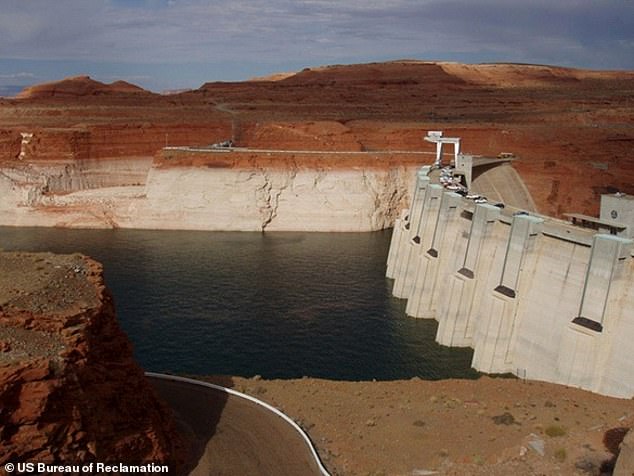
On the Lake Powell side of the Glen Canyon Dam, the hydroelectric dams can be seen above water level. These inlets, located above the river outlets, feed water to energy turbines.
Conditions may therefore deteriorate in the coming months.
After a high-flow experiment last year, when a huge amount of water was released to feed Lake Mead, inspectors discovered significant damage to the pipes involved.
There will therefore be no such water discharge in April.
That means Lake Powell’s water level will remain high and safe for locals.
But without emissions, residents downstream are at risk of a water crisis.
The river drainage works are located approximately 30 meters lower on the dam than the hydroelectric power stations.
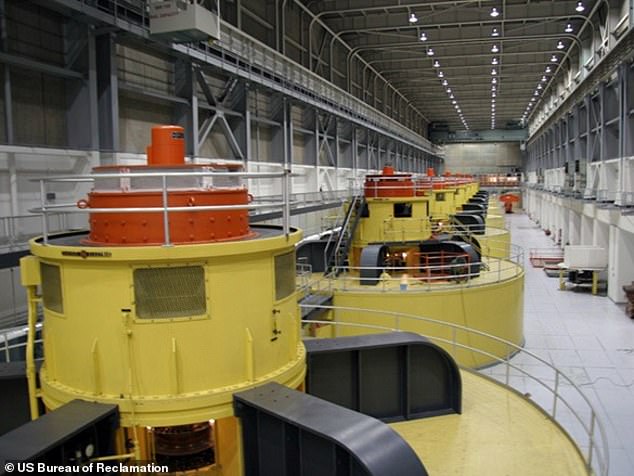
The water flowing through Glen Canyon Dam’s hydroelectric turbines provides electricity to more than five million people in Wyoming, Utah, Colorado, New Mexico, Arizona, Nevada and Nebraska.
That larger set of pipes directs water through hydropower-producing turbines on the other side of the dam, providing electricity to more than five million people in Wyoming, Utah, Colorado, New Mexico, Arizona, Nevada and Nebraska.
Not releasing water from the river drainage works can actually improve energy production, leaving more water for the turbines – although energy production in Lake Mead could be hampered if water levels get low enough.
Completed in 1966, Glen Canyon Dam flooded part of the canyon with water from the Colorado River, creating Lake Powell.
Because Lake Powell must hold enough water to reliably generate power, the river drainage works are not used often.
Only with the twice-yearly ‘high flow experiment’ do they get the urge to train.
In these tests we see that millions of liters flow through the river drainage facilities in just a few days.
Part of their reason is to test the pipes, but it’s also about feeding Lake Mead and keeping the Colorado River flowing downstream, both of which rely on man-made releases from the dam.
